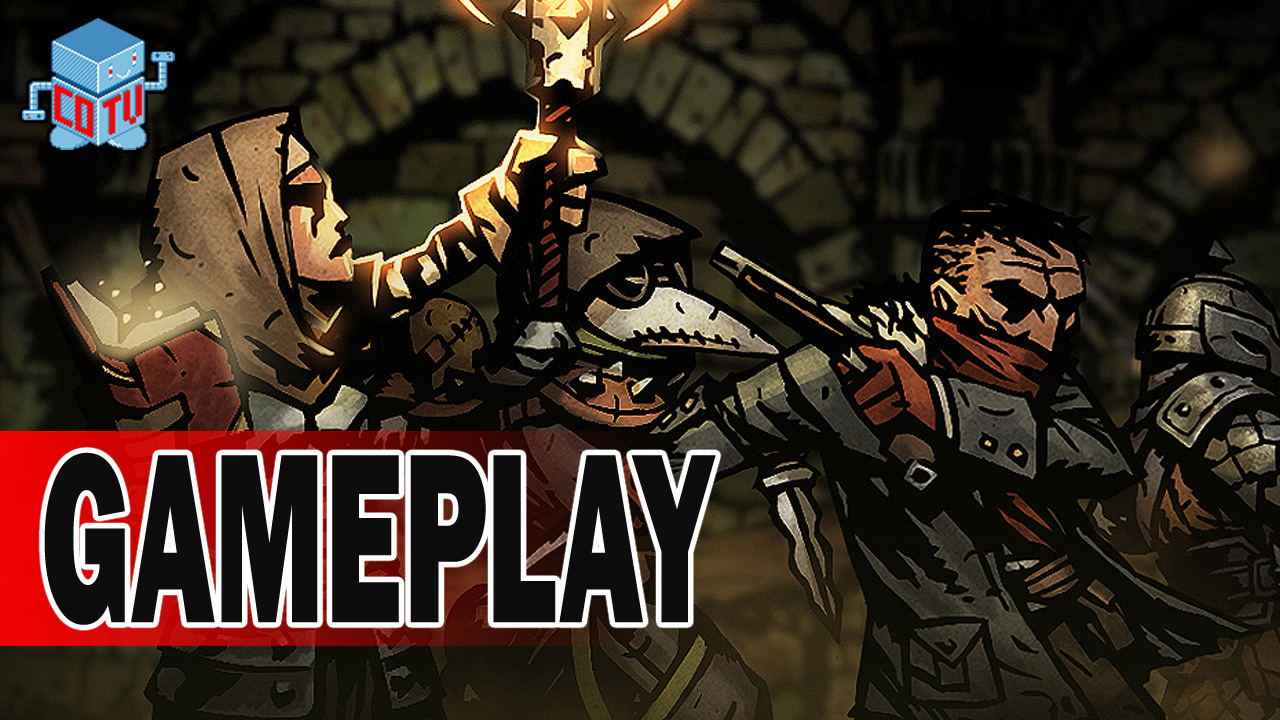Darkest Dungeon is an amalgamation of different genres to produce a difficult, stress-inducing, sometimes maddening adventure. For the complete package, Red Hook Studios combined 2D, procedurally generated dungeons, tactical turn-based combat, base building, RPG elements and an AI with a penchant for sadism. What they created was a game that had me shutting down the game and leaving my chair while still wanting to play more. Yeah, you’re going to need a very comfortable chair because this game is addictive. So, want to know what is the best computer chair for long hours sitting? Check this one out.
In Darkest Dungeon, you have inherited a small hamlet that is cursed due to the dealings of your late relative. He dabbled in things he should not have and now you are here to clean it up. You cannot do it alone. Adventurers have come to town in search of treasure and glory. You hire them to delve the desecrated areas and help you uncover the truth.
There are a large number of hero types with different skills and abilities for you to mix and match. You have big melee classes like the crusader, man-at-arms, and leper, ranged classes like the arbalest and the highwayman and support classes like the vestal and the grave robber. Each hero type has its pluses and minuses like you would have building any team in a role playing game. I prefer a mix of heavy hitters (Crusader, Leper, Helion) in the front, with a ranged character (Arbalest, Highwayman) in the back and a healer (Vestal) or a solid mid-range character (Hound Master, Bounty Hunter) for clean-up.
Battle consists of turn-based combat where during each hero’s turn, you may choose from amongst 4 combat skills unique to the hero class, the ability to move forward or backward (it’s in 2D, remember) or Pass on their turn. The movement and the passing can become important as each hero skill may be limited by which space the hero is standing in. A melee attack can clearly not be made from the back row and firing a crossbow needs a little space, thus you cannot be up front. There are also skills that can move the heroes in the line – a grave robber has a Lunge skill that can be devastating, but it moves her up 2 spaces in the line. Are you willing to throw off your company’s cohesiveness with a daring move? The game will covertly ask you a lot of questions.
That is where the meat of the game lies. Everything in Darkest Dungeon is about risk and reward. “Do you want to push your team through another battle?” “Will this hero survive mentally?” “When do you camp?” “Should you use your rare trinkets this mission?” “Where should you focus your attacks – on those that do physical or psychological damage?” Again, it’s all about risk and reward. In Darkest Dungeon, a dead hero stays dead and everything their carrying is lost. So, upgrades, improvements, trinkets will all be lost if they die. But what if you were almost at the mission goal? You can quit a mission at any time, but you do not receive experience as well as it has a psychological toll on the heroes you deployed that continues into the hamlet. If you continue, you may lose characters and those upgrades, skills, trinkets take time to rebuild in new characters. Is it worth it? That is just one of the many questions you will be tested by each time you turn the game on.
With all these fantastic mechanics, why would I my introduction include me walking away from my computer in frustration? My biggest complaint about Darkest Dungeon is that the AI and systems are not consistent. Darkest Dungeon is meant to be difficult. They have a warning at a load screen plainly setting expectations that it will be a test. Popular among some games in recent years, the hook is having a difficult game to challenge player skills – i.e. Bloodborne. The difference between Bloodborne and Darkest Dungeon is that when Bloodborne beats you down, you get back up and tackle the task with the lessons learned. In Darkest Dungeon, you can take a party made with level 2 heroes with upgraded weapons and get wiped by a level 1 dungeon’s regular monsters and the next time, doing a similar dungeon, you can fly through (as I surprisingly had for my video on our YouTube channel). It is obvious that in the background, there are dice constantly rolling for randomization of the world, but it feels like AI and systems are purposefully stacked to indiscriminately screw the player with no explanation. There have been battles I’ve lost where I didn’t feel I had any control over the outcome. I was just blitzed with crits and dodges by my weak opponents and the tables severely turned into the AI’s favor in a battle that I felt little to no control. Then, it’s back to the drawing board back in the hamlet.
Overall, Darkest Dungeon is well-put-together amalgamation of systems, art and gameplay that will challenge you. The challenge to the player is two-fold. The game’s difficulty and constant balance of its risk/reward system is fantastic. It will make you think about Darkest Dungeon when you aren’t playing – high praise for any game. It will also challenge your patience. Any time a game seemingly takes away the ability of the player to influence the outcome; it is one of game development’s cardinal sins. The best part is that this is something that can still be balanced in a patch. Keeping this in mind, think about your own levels of patience and frustration tolerance before purchasing, and if you can handle it, I think this is a game you should pick up to experience for yourself.
